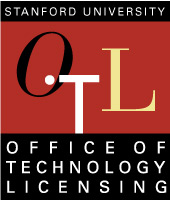March 2, 2012
What Information and DescriptionIs Necessary to Support a Patent Application?
You must provide enough information to enable a skilled person to practice the invention that you describe in the claims. To obtain the broadest claims possible, you should file your patent application when you can provide enough detail that your invention can be performed in the various ways that you think will interest others. You need not describe each variation, but you need to give enough instruction that a skilled person could make the differing versions that you claim.
It is all right if routine experimentation is required, e.g. to optimize certain parameters, but it is a problem if significant or “undue” experimentation is needed to make the invention work. As a result, it is better to err on the side of disclosure, including all information and drawings needed for the skilled person to understand the invention.
The description of your invention must be detailed enough that it is clear that you actually possessed the invention at the time your application was filed, i.e. that you are not claiming more than you actually invented and appreciated at the time. To help in meeting this written description requirement you should provide a range of examples, any supporting data, and drawings that show various versions that you have contemplated.
How much information must be disclosed varies with the field of your invention, your claiming strategy (is your claim directed to an important but narrow advance in a crowded field or to a broad, pioneering advance in a new field?) and other factors. The following examples may give you a feel for what you should be ready to disclose in a patent application. The patent attorney who files your application may have additional, more specific comments.
*Note: This memo is written in the context of filings in the U.S. Patent Office. Other countries may have different requirements for supporting disclosure.
The patent office and the courts divide scientific fields into “unpredictable” and “predictable” arts. The degree of required disclosure will vary with the perceived degree of predictability in the field of your invention. There is no general requirement that working examples or experimental data must be disclosed, but they can reduce concerns regarding predictability and sometimes may be necessary.
Unpredictable Arts
Biotechnology
Because biotechnology is considered more unpredictable than other fields, more detail and evidence that the claims are enabled is typically required than in other fields. If the claims are directed to DNA sequences, you should disclose the precise sequences. For other biomolecules, you should have the structure, formula, or other definitive properties. Alternatively, certain sufficiently specific functional characteristics are adequate, such as describing an antibody in terms of the antigen to which it binds. If your claim will encompass analogs or derivatives, including non-functional ones, explain which analogs/derivatives will express the desired results.
In addition, you need to identify the starting materials and process conditions in order to avoid undue experimentation in carrying out the invention. How many examples of a given category (genus) you should have varies with the breadth of the claim. Having only a few examples of gene sequences (species) for a claim that covers a broad category of gene sequences is not enough.
Chemical
Similar to biotechnology, chemical inventions typically require significant written detail. For chemical and biotechnology patents the written description should provide “a precise definition, such as by structure, formula, chemical name, or physical properties, not a mere wish or plan for obtaining the claimed chemical invention.”
Predictable Arts
Electrical
The electrical arts are viewed as predictable. As a result, a single example may enable a very broad claim, so long as variations from the example are known or obvious to one of skill in the art. Thus, any unusual variant should be specifically described.
Mechanical
The mechanical arts are considered among the most highly predictable. Broad implementation of inventions in this field may be based on established mathematical and scientific laws. However, if your claims will include embodiments that rely upon a new or little-known method or material, provide a description that allows other skilled persons to use the nascent technology. Exemplary drawings and detailed descriptions of alternative versions will provide support for narrower dependent claims even if you have not yet physically created each described alternative.
